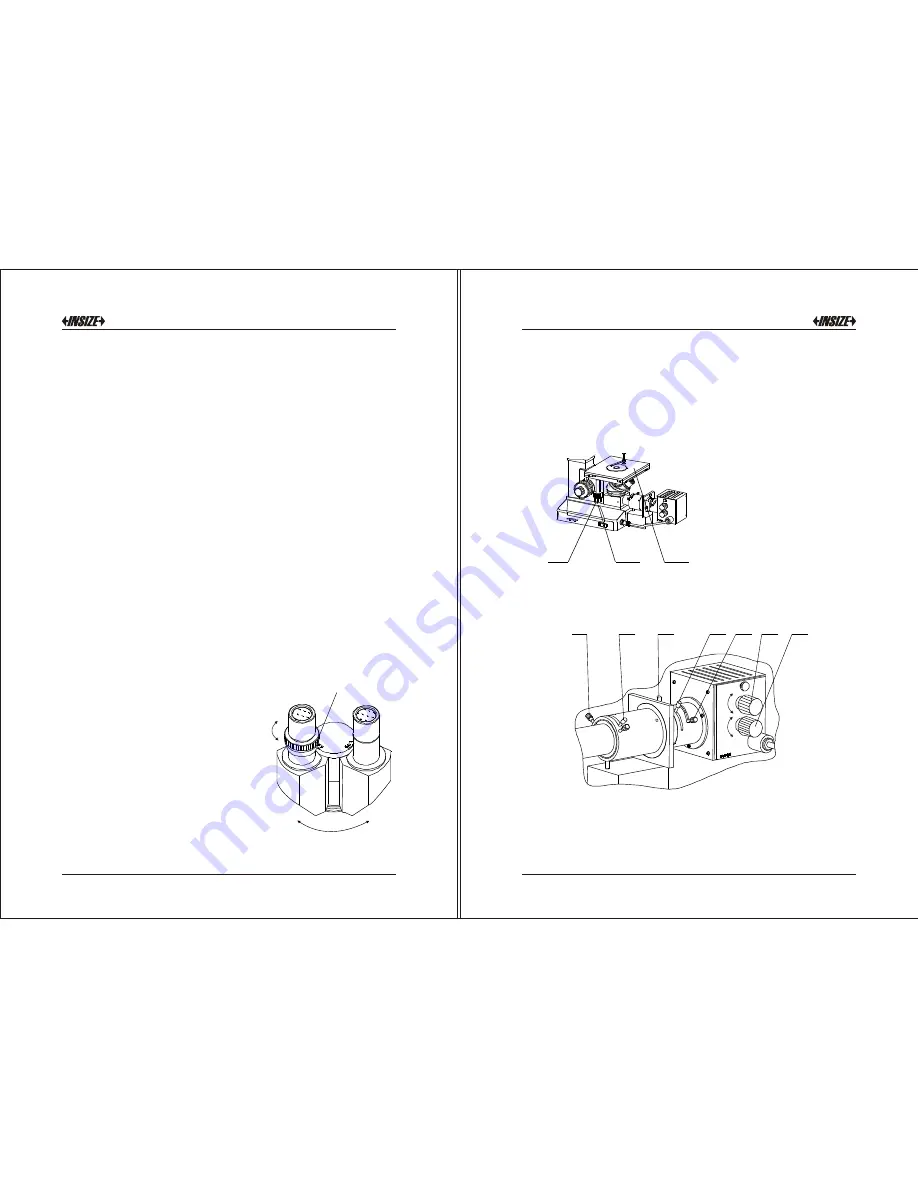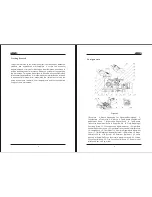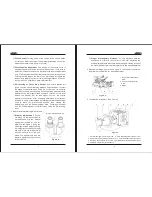
Focus Control
Turning either of the coarse focus control knobs
will raise or
lower the stage. The smallest graduation on the fine
adjust knob index scale is 2
μ
m
of
vertical.
Focus Tension Adjustment
The tension of the coarse focus is
adjustable and preset at the factory for ease of use. If you wish to
adjust the coarse focus tension, first locate the tension adjustment
ring, It is located between the frame and coarse adjustment knob.
Turning the ring toward the rear of the microscope increases the
tension, and toward the front of the microscope loosens it. Tension
is too high if you experience physical discomfort.
Pre-focusing or Focus Stop Control
Use of this feature will
insure that the shorter working distance objectives don't contact
the stage or specimen when using the microscope. Its use also
simplifies focusing. After focusing on the specimen with the coarse
adjustment by low magnification eyepiece, rotation of the lever
toward the handler will set and upper limit on the coarse
adjustment movement. After changing specimens or objectives,
focusing is
easily accomplished by rotating the coarse adjustment
knob to reach the pre-focused position, then making fine
adjustments with the fine adjustment knob. Focusing movement
with the fine adjustment isn't affected by using the pre-focusing
lever.
D i o p t e r A d j u s t m e n t
P r o p e r
correction for individual vision is
accomplished via the diopter
adjustment located at the left
eyepiece, see figure 4. Using the
40X magnification objective, bring
An image into focus with your right
eye only. Once the image is well
focused, observe with left eye,
make fine adjustments with the
diopter Adjustment ring to correct
for your Vision.
Proper interpupillary distance
, Or the distance between
eyepieces, is crucial to the comfort of the user. Adjusting the
interpupillary distance is accomplished through a “folding” action of
the optical head, at figure 4, allowing for quick and easy adjustment.
1. Field Diaphragm Centering Screw 2. Field Diaphragm Adjustment Lever
3. Aperture Diaphragm Adjustment Lever 4. Filter wheel(Polarizer(optional))
5. Focusing Lens Adjustment Lever 6. Light Bulb Transverse Adjustment
Knob
7 Light Bulb Vertical Adjustment Knob
Figure
6
Figure
4
Diopter Adjustments Ring
2)
4)
3)
3. Diopter and Interpupillary Adjustments
4. Mechanical Stage Controls, see figure 5, the coaxial transverse/
longitudinal knob allow for easy adjustment.
5. Illumination Alignment, See Figure 6.
2)
7
8
Figure
5
1. Longitudinal Adjustment
Konb
2. Transverse Adjustment
Knob
3. Stage
1
2
3
1
2
3
4
5
6
7
1)
























